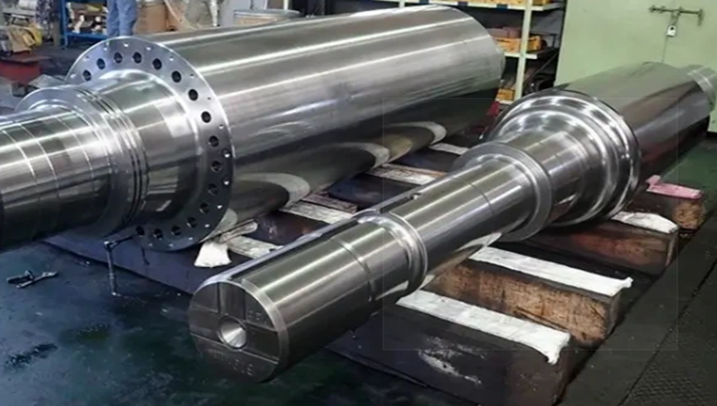Forging titanium alloys has become essential in industries requiring high strength-to-weight ratios, such as aerospace, medical, and automotive fields. However, forging titanium presents unique challenges and differences compared to forging other metals, such as steel, aluminum, or copper alloys. These differences arise from titanium’s distinctive physical and chemical properties, requiring specific processes and precautions to achieve optimal results.
One of the primary differences between forging titanium alloys and other metals is titanium’s low thermal conductivity. Compared to materials like steel, titanium does not easily transfer heat, causing it to retain heat in localized areas during forging. This property requires careful temperature management to ensure that titanium is heated uniformly and avoids developing cold spots that could lead to cracks or structural weaknesses. In contrast, steel and other metals distribute heat more evenly, making it easier to forge them at consistent temperatures.
Additionally, titanium has a high melting point, generally around 1,670°C (3,038°F), which allows it to withstand extreme temperatures without deformation. However, while its high-temperature resistance is advantageous in high-stress applications, it complicates the forging process. Titanium alloys typically need to be forged at temperatures between 900°C and 950°C, which is lower than its melting point but still high compared to most metals. This narrow temperature range demands precision, as overheating can cause oxidation and embrittlement, while underheating makes the alloy too rigid to forge effectively.
Another unique characteristic of titanium is its reactivity with atmospheric gases like oxygen and nitrogen, especially at elevated temperatures. When titanium is heated, it can easily absorb these gases, leading to embrittlement or the formation of an oxide layer on its surface, which can degrade the metal’s mechanical properties. To address this, forging titanium often requires a controlled environment, such as a vacuum or an inert gas atmosphere, to prevent oxidation. Alternatively, special coatings can be applied to the metal’s surface to shield it from reactive elements. In contrast, many common metals can be forged in open-air environments with less risk of contamination or embrittlement.
Titanium’s work-hardening characteristics also differentiate it from other metals. Titanium becomes harder and stronger as it undergoes plastic deformation, but this also makes it less malleable and more resistant to further shaping. This property requires forging operations to use carefully calculated press forces and controlled deformation rates to prevent cracking or excessive stress accumulation. Metals like aluminum, by contrast, are much more malleable and can endure a broader range of deformation without fracturing, making them easier to work with under various forging conditions.
In conclusion, forging titanium alloys requires specialized techniques and equipment due to their low thermal conductivity, high melting point, reactivity at elevated temperatures, and tendency to work-harden. While these properties make titanium ideal for high-performance applications, they also necessitate more stringent controls in the forging process compared to other metals.
Post time: Nov-21-2024





